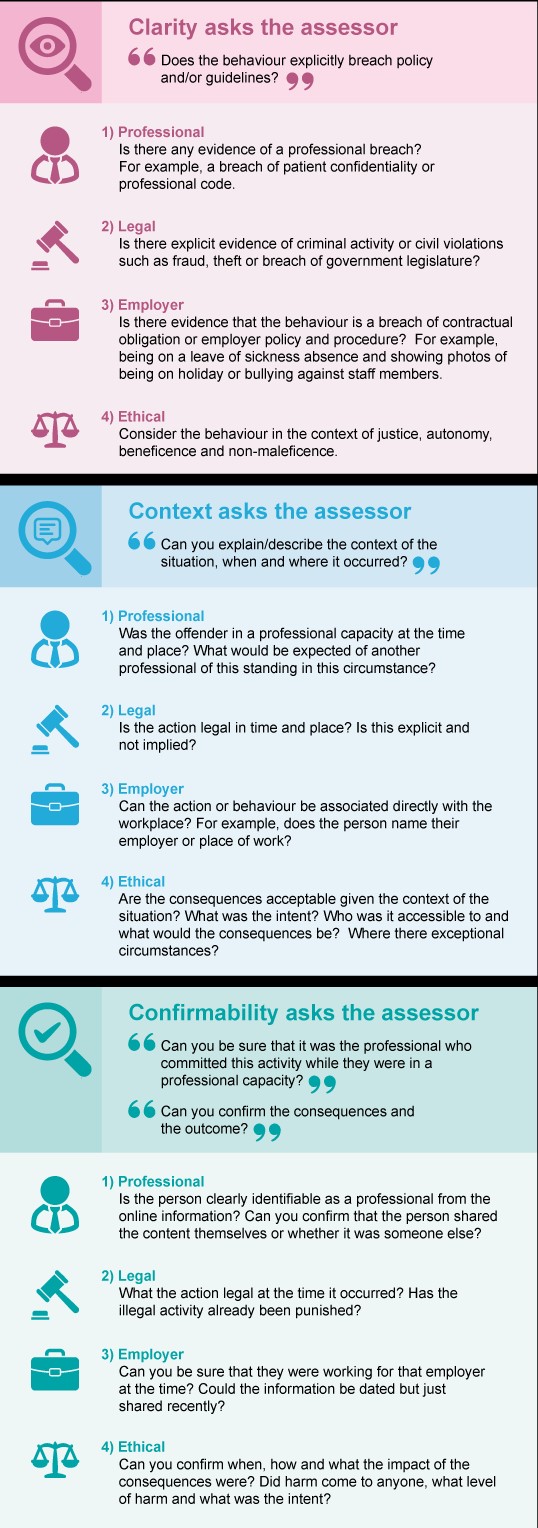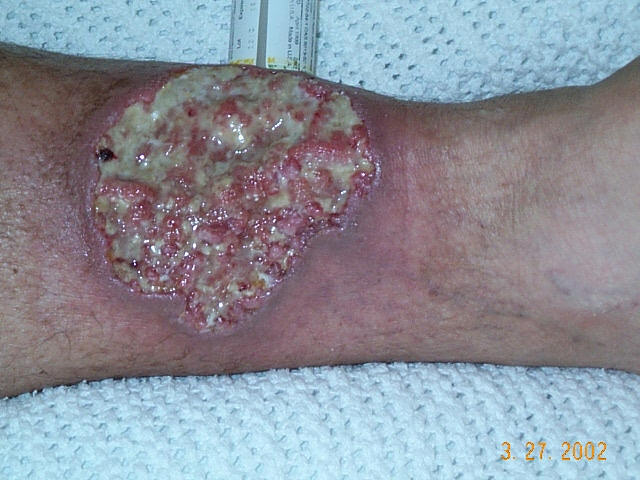This content is associated with The Open University's Nursing and Healthcare courses and qualifications.
Warning: Please note, there is an image of an infection towards the bottom of this page which some users may find distressing.
E-professionalism is "the attitudes and behaviours that reflect traditional professionalism paradigms but are manifested through digital media" (Kacznarcyzk et al., 2013).
Professional bodies such as the Nursing and Midwifery Council (2016, United Kingdom) have specific guidance on the use of social media and the majority of organisations have social media, Internet or social network policies (Ryan, 2016).
It is important to be able to assess, make decisions and know when to escalate concerns when viewing online behaviours of other professionals. Ryan (2019) discusses the A2A 3Cs (Awareness to Action: clarity, context and confirmability) process when making these decisions. This step by step process allows you to think about the four pillars of accountability as described in Caulfield (2005) – professional, ethical, legal and employer – and allows you to decide, using evidence, if online incidents and behaviours require escalation. By evidence, this means professional guidance, policy, procedure or legislation, for example.
The image below outlines, in order, what is meant by the 3Cs – clarity, context and confirmability. All of the 3Cs need to be breached for the incident to be referred to the professional body (although a disciplinary investigation might be more appropriate in some circumstances). If only clarity and context are breached then this might need some reflection, changes to privacy settings or organisation investigation. If only clarity is met, then this probably requires no action or some reflection on privacy settings and sharing of content.

Discover the 3Cs
The following video explains the 3Cs of clarity, context and confirmability, and will help you with completing the activity below.
A case study from Introducing health and social care
A nurse had been working with a patient who had a chronic venous leg ulcer for several years. All options of treatment that the medical staff were aware of had been tried and the ulcer was not improving. They discussed this with the patient and explained that there might be other dressings or treatments available, suggesting that a photograph be taken and shared in a closed, professional-only online discussion forum. The patient provided consent and this was documented in their nursing care plan. A nurse took a photo of only the patient's venous leg ulcer and shared it with a call for help on a professional discussion forum.
The following message was posted by a nurse:
Hi all. I have been working with this patient for several years and have exhausted all recommended options to treat this venous leg ulcer. This is having a significant impact on her quality of life as a 42-year-old woman with diabetes type 2. This patient has provided me with consent, which I have documented in her notes, to share a picture of this (the image below is a similar example of the case mentioned. The original photo could not be used due to copyright issues) in the hope that someone from elsewhere in the UK has experience of a similar ulcer and has a suggestion of any alternative dressings that might be available so I can discuss this with the GP and explore whether this is feasible. Any help would be appreciated. Thanks in advance.

Other nurses began to comment with suggestions, others reported it to the forum moderators, who eventually removed it due to being unprofessional and unethical.
Decision making on e-professionalism for nurses
Using the A2A 3Cs decision tool prompts and by making reference to relevant sources of evidence such as the Nursing and Midwifery Council (NMC) guidelines or legislation, make a decision about whether this is a professional breach.
Use the activity below which will help you to explore the scenario in the context of Online Social Network (OSN).
Find out how secure your social media profiles are
Discover more content like this










Rate and Review
Rate this activity
Review this activity
Log into OpenLearn to leave reviews and join in the conversation.
Activity reviews